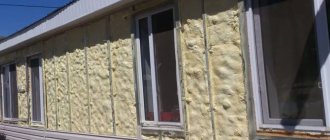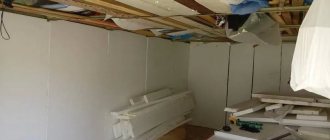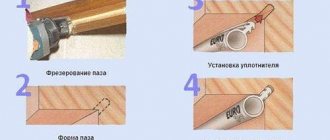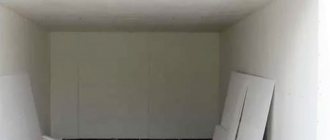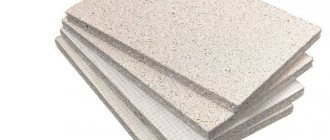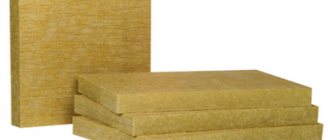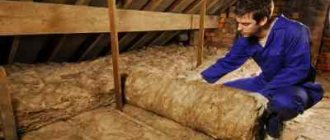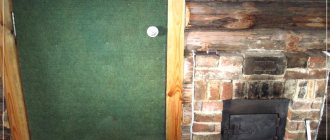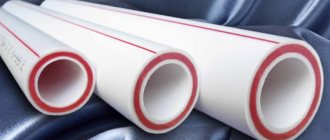On the modern market, thermal insulation materials are presented in a huge variety of types and forms. It can be difficult for the average buyer to understand them and choose the right one, focusing not only on the price, but also on the characteristics that would best meet the operating conditions of the insulated structures and other requirements. Having obtained a general understanding of the properties of such materials, it will be easier to solve this problem.
Different building elements require different insulation materials Source greencity.com.tr
General information
Materials for thermal insulation are classified according to several criteria.
- By purpose - household, industrial.
- By origin - natural, synthetic.
- By release form - sheet, roll, bulk, sprayed, piece.
- The structure is cellular, fibrous, granular, composite.
- By type of raw material – organic, inorganic.
And all types of insulation, depending on the composition and properties, have a specific scope of application and installation technology. For example, bulk materials are more suitable for horizontal surfaces, fibrous materials need waterproofing, and structures of complex shapes are easier to insulate with sprayed insulation or special piece products.
Thermal insulation for a pipeline outlet unit Source pro-uteplenie.ru
Having understood the features of modern insulation, it will be possible to competently approach their choice.
Tips for use
Most modern insulation materials are produced in rolls, sheets and mats. The last 2 options are the most convenient to install, because they are already cut evenly, which allows for a tighter joint. The width of soft insulation mats should be 1.5 cm less than the distance between the sheathing elements. This will avoid the appearance of gaps through which the cold will penetrate into the room.
Insulation work should be planned. It is advisable to use a thermal imager to identify areas where the greatest heat loss is observed. Regardless of the type of material chosen, it is necessary to prepare the surface, eliminate small cracks, remove debris and carry out antifungal treatment.
For lathing, you can use metal profiles with an anti-corrosion coating. Most glued insulation requires additional fixation with special dowels. Liquid ceramics should not be applied with a spray gun. It is best to use a roller or brush. When using cork insulation, you need to prepare the surface in advance, because... it should be as level as possible so that condensation does not accumulate under the coating.
Basic properties of different thermal insulation materials
The most popular types of thermal insulation used in private construction are polystyrene foam, fibrous (wadding) materials, hardening foams, and expanded clay. Read more about them and some other effective insulation materials.
Expanded polystyrene
Foamed polystyrene is a synthetic material. Produced by pressing or extruding molten foamed raw materials.
- Compressed polystyrene foam, more often called polystyrene foam, has lower strength and larger granules with air sealed in them.
- Due to its denser fine-cell structure, extruded polystyrene foam has increased strength and improved characteristics.
The difference in the structure of the materials is clearly visible Source ppu-prof.ru
Expanded polystyrene thermal insulation materials are insulation that is extremely popular due to its low cost, ease of installation, versatility of use and low thermal conductivity. They are produced in the form of plates and shells for pipes and fittings of different diameters.
For installation on vertical surfaces, it is not necessary to arrange a supporting frame - rigid sheets of insulation can be glued to the surface or fastened mechanically. They can be used to insulate floors, walls, ceilings, and roofs. And loose polystyrene foam granules are used as a filler in the production of light and warm cellular concrete.
The main advantage of the material is its hydrophobicity. Closed cells do not allow water to enter, so they do not lose their thermal insulation properties. This quality allows the use of expanded polystyrene for insulation of such difficult-to-use elements as foundations, plinths, blind areas, basement walls, caissons, underground pipelines, etc.
Insulation of the foundation and blind area Source sdelai-lestnicu.ru
However, these types of thermal insulation materials also have some disadvantages, including low vapor permeability, due to which a greenhouse effect occurs in a room insulated with polystyrene foam in the absence of high-quality ventilation. They do not want to insulate wooden structures to prevent them from rotting.
This material is also considered flammable, although it does not burn, but when exposed to fire it melts, releasing toxic substances.
Loose and warm polystyrene foam often becomes a haven for mice, which make nests in it, destroying the integrity of the slabs. But dense extruded polystyrene foam does not attract them.
Glass wool
One of the oldest types of mineral insulation is glass wool, made from molten sand and broken glass. The hot mass is stretched into fibers, bundles of which are pressed and form a material resembling cotton wool in its structure.
Glass wool is available in rolls and mats Source huzzaz.com
See also: Catalog of companies that specialize in home insulation
In addition to the fact that glass wool is a good heat insulator, it is also a material that absorbs noise well. It does not burn, does not attract rodents at all, is lightweight and affordable. But all these positive characteristics give way to the inconveniences associated with installation.
- Fragile and brittle fibers of cotton wool easily come off the mat and fly into the air, getting on the skin and mucous membranes, causing irritation.
- The low density of the material leads to its gradual settlement, which complicates installation on vertical surfaces.
Like all fibrous insulation, glass wool is afraid of getting wet and needs protection from water and wet steam getting into it.
Taking into account these features of the material, it is used mainly for thermal insulation of floors, interfloor ceilings, and roofs. And also for insulation of above-ground pipelines with a mandatory outer layer of waterproofing film.
Insulated glass wool main pipeline Source rk.gov.ru
Stone wool
Of all the types of wall insulation, the most popular is stone wool, the raw material for which is basalt rocks. This is an absolutely harmless, non-flammable material with excellent heat capacity and vapor permeability characteristics. Suitable for insulating any above-ground parts of a building, provided that a water barrier and an air gap are created between it and the finish to evaporate excess moisture.
It is produced in different densities and in a variety of forms - in rolls, mats, piece-shaped products with a protective coating. It can be laid on horizontal surfaces, mounted on walls in lathing, and the densest products can be fixed with glue or dowels and plastered.
What types of insulation and what to use?
There are many types of insulation materials on the market, differing in composition, characteristics and release form. It is necessary to choose the right insulation option, taking into account the characteristics of the surface that requires additional protection.
Floor insulation
Almost all types of materials are suitable for floor insulation. You can use bulk materials such as expanded clay and vermiculite. With additional waterproofing, the use of mineral and ecowool is allowed. Insulation with polystyrene foam boards also has a good effect. However, when treating the floor, it is not advisable to use sprayed insulation. High vibration loads can cause peeling and cracking.
Insulation of walls outside
When insulating the facade of a building, it is best to use materials with low water permeability. Insulation with fiberboard and arbolite blocks and extruded polystyrene foam slabs has a good effect. Expanded clay can be poured between the walls. If you are sure that water will not accumulate in the walls, you can use ecowool.
When insulating walls externally, you can use mineral wool, but in this case it is necessary to install waterproofing and protect the material with a layer of plaster. In addition, you can use hinged polyurethane foam panels and warm plaster. Liquid ceramic thermal insulation has a good effect when used outdoors.
Insulation of internal walls
To insulate internal walls, mineral wool slabs are most often used, which after installation are covered with plasterboard. In addition, cork boards and wallpaper can be used effectively. Warm plaster is often used for interior decoration. To decorate the interior walls of balconies, it is better to use foil insulation.
Ceiling insulation
Expanded clay and vermiculite can be used to insulate the ceiling from the attic. When arranging an internal insulation pie on the ceiling, you can use mineral wool, polystyrene foam boards, and polystyrene foam. In addition, it is permissible to use cork wallpaper and slabs. They are easy to install and are lightweight.
Roof insulation
To insulate roof slopes, mineral wool slabs are often used, which are then covered with plasterboard. However, in this case, additional waterproofing is required, because in this part of the house there is a high probability of material getting wet. Expanded polystyrene slabs are often used to construct a thermal insulation pie for the roof. The use of sprayed insulation has a good effect. Sprayed polyurethane foam is not affected by moisture and at the same time allows you to create a monolithic thermal insulation coating between the roof beams.
Video description
The types and properties of stone wool are described in the video:
Unlike glass wool, stone wool does not cause irritation when cutting and laying. But of all fiber insulation, it has the highest price.
Slag
Another type of fibrous mineral insulation is slag wool. In terms of its heat-saving characteristics, it is close to stone and glass wool, but its scope of application is limited to non-residential buildings. The fact is that these heat-insulating materials are highly chemically active and, in close contact with metal structures, oxidize them. They may also contain toxic substances, since slag wool is produced from waste from metallurgical production - blast furnace slag.
Stitched slag mat Source isolantisrl.it
The fibers of the material are brittle and mobile, which forces the constant use of personal protective equipment for the eyes, skin, and respiratory organs during transportation, loading and installation.
But in terms of price, it is one of the most affordable materials, so it is often used to insulate garages, warehouses and other utility buildings.
Thermal insulation requirements
In order to efficiently perform the task of preserving heat in a room, the material must meet certain technical characteristics.
Insulation quality criteria:
- thermal conductivity;
- vapor permeability;
- water absorption;
- flammability;
- resistance to chemicals.
An important factor is resistance to biological effects. Rodents and microorganisms can ruin all efforts to maintain heat. And also initially you need to think about the installation of the insulating layer. The simpler it is, the less time and resources you will need to spend on it.
Thermal conductivity
This indicator is directly related to breathability. Warm air is lost from the room in the following cases:
- if the temperature inside the room is higher than the temperature of the parts of the structure, then the air will give off heat until the temperatures are completely compared;
- warm air rises to the roof, gradually being replaced by cold air, which enters the building through ventilation and loose structural elements of the building.
It is insulation that prevents the temperature in the room from decreasing. And the lower the thermal conductivity and breathability, the better it will cope with its task.
| Material | Thermal conductivity, W/(m K) |
| Polyurethane foam | 0,019-0,035 |
| Expanded polystyrene | 0,029-0,038 |
| Minvata | 0,035-0.040 |
| Ecowool | 0,032-0,041 |
| Basalt wool | 0,032-0,048 |
Polyurethane foam is the best in terms of this characteristic; its heat transfer resistance is higher than that of other materials. Polyurethane foam is applied hermetically, leaving no seam joints or gaps that could begin to release heat over time.
Vapor permeability
The temperature of the walls in winter is lower than the air temperature in the room (with proper thermal insulation, the difference should be no more than 3 degrees). The steam passed through the inner layer of insulation condenses and settles in the form of droplets, which significantly increases the heat transmittance. If the vapor permeability of the insulation is higher than that of the walls of the building, the humidity remains for a long time, which provokes the appearance of mold and mildew. The insulation attached to the outside of the walls must have no less vapor permeability than the previous layers in the direction of steam movement, so that the part that gets into the walls can escape to the street.
| Material | Vapor permeability, mg/(m*h*Pa) |
| Polyurethane foam | 0,05 |
| Expanded polystyrene | 0,013 |
| Minvata | 0,45-0,61 |
| Ecowool | 0,3 |
| Foil insulation | 0 |
To prevent the appearance of fungus in the walls, it is necessary to carefully isolate them from steam. To do this, an internal insulation with minimal vapor permeability is selected or an additional insulating layer is installed, the main task of which is not to allow steam to pass to the walls.
Water absorption
Wet insulation cannot perform the task of retaining warm air as well as dry insulation. The point is the difference in thermal conductivity of air (0.022 W/mK) and water (0.6 W/mK). The worse the material absorbs and retains water, the better it retains heat in the house.
| Material | Water absorption over 24 hours, % |
| Polyurethane foam | 0,02-2 |
| Expanded polystyrene | up to 0.2 |
| Minvata | 1-30 (depending on density) |
| Ecowool | >1 (depending on hydrophobicity) |
| Basalt wool | 6-30 |
When using thermal insulation from raw materials with a high coefficient of water absorption or in a place with constant or possible high humidity, it is important to pay attention to high-quality hydro- and vapor barrier.
Flammability
The flammability group must be indicated by the insulation manufacturer. There are 5 groups:
- NG and G1 – self-combustion time 0 sec;
- G2 – self-combustion time up to 30 seconds;
- G3 – self-combustion time up to 300 seconds;
- G4 – self-burning time is more than 300 seconds.
| Material | Flammability group |
| Polyurethane foam | G2-G3 |
| Expanded polystyrene | G4 |
| Minvata | NG |
| Ecowool | G1-G2 |
| Basalt wool | NG |
Combustible insulation should be chosen only if the finishing in the room is made of non-combustible materials.
Video description
Watch a video about the advantages and disadvantages of ecowool and the rules for its installation:
Polyurethane foam, penoizol
The most highly effective modern thermal insulation materials are substances that, after being sprayed onto the surface, form a continuous layer of hardened foam with sealed pores impenetrable to moisture. The most common example is polyurethane foam in cylinders.
To treat large areas, materials such as penoizol and polyurethane foam are applied with special installations. They adhere well to any surface, allowing you to insulate even complex curved elements, vertical and inclined structures without lathing or using fasteners.
Insulation of a pitched roof from the inside Source greenteamli.com
Advantages:
- very low thermal conductivity coefficient;
- absence of cold bridges;
- light weight and no load on insulated structures;
- resistance to water, high and low temperatures;
- creation of anti-corrosion protection for metal elements;
- durability.
For reference! Polyurethane foam is destroyed by ultraviolet radiation, so facades and other open-air structures cannot be left unfinished for a long time.
Thermal insulation boards and pipe shells are also made from polyurethane foam.
Manufacturers
The market now offers a large number of similar materials from different manufacturers. High-quality options that have better performance characteristics and are safe for people are produced under the following brands:
- Rockwool.
- Isover.
- Ursa.
- Knauf.
- Izovol.
- TechnoNIKOL.
- Beltep.
- Europlex.
- Penoplex.
Each manufacturer produces a line of products designed for insulating surfaces, so it is possible to choose the best option.
Video description
The types and methods of using polyethylene foam as insulation are described in this video:
Tow, construction felt
When talking about what types of insulation there are, it is worth mentioning those that are used to insulate the gaps between the crowns of a log house, cracks around window and door frames.
- Felt is a fabric felted from low-grade wool with the addition of paste, plant fibers and chemicals to protect against moths and other insects.
Felt tape Source bitrix-cdn.ru
- Tow is produced from flax and hemp waste, obtaining from them a fibrous material for caulking walls.
How to insulate a roof from the outside and inside
The method of insulation and the necessary materials are selected based on the climate. The type of roof is important - pitched and flat structures require their own approach. The choice also depends on the stage of construction at which the work is being carried out. Typically, preference is given to lightweight materials with minimal loading (foam, fiberglass and mineral wool are popular). Other insulation materials also perform well.
Roof insulation with polyurethane foam
Apply by spraying (closed-cell foam material). Forms a seamless coating on the inner surface of the roof. The heat insulator is resistant to temperature changes and moisture penetration. Requires protection from solar ultraviolet radiation.
Basalt slabs for the roof
They are well suited for roof insulation, as they do not absorb moisture and retain their shape well.
Briefly about the main thing
Having studied the properties of thermal insulation materials, we can conclude that each of them is not ideal and is not without its drawbacks. There is no ideal insulation suitable for all purposes. When choosing the best option, you need to take into account the material of the insulated structure, its shape and position in space, operating conditions and other points. For example, fibrous materials that are afraid of moisture are not suitable for the underground parts of the building, and the steam room cannot be insulated with foam plastic, which releases harmful substances when heated.
Introduction
During the operation of houses, the following tasks are faced:
- Heating of residential premises.
- Preservation of the received heat.
- Preventing cold from penetrating into residential buildings from the street.
Heat loss in the house
The walls of buildings are one of the most problematic places in terms of thermal protection and heat retention. These problems have to be solved using various materials for thermal insulation of walls, various methods and methods (“dry” or “wet” insulation technology, using heat-insulating plaster mixtures, thermal insulation paints).
Applying thermal insulation paint to a panel facade
The work itself on thermal insulation of walls involves the installation of additional structural elements on them in order to reduce heat transfer. In the installation of these structures (systems), heat-insulating materials for walls, accompanying fasteners and equipment, and decorative finishing are used. In the thermal insulation system, in order to protect it from rotting, destruction, and oversaturation with moisture, materials for vapor barrier and waterproofing, and structural solutions for its ventilation can be used.
The work itself on thermal insulation of wall surfaces can be done with your own hands, if they are not associated with external work on the upper floors of buildings. In this case, it is necessary to involve industrial mountaineering specialists.
Insulation of external walls of apartments on the upper floors of the house
Normative documents
It is recommended to design and install insulation systems on the walls of buildings taking into account regulatory documents (SN and P, GOST, SP):
- SN and P 23-02-2003 “Thermal protection of buildings”.
- GOST 52953-2008 “Thermal insulating materials and products. Terms and Definitions".
- GOST92 “Thermal insulation materials and products for construction”.
- GOST92 “Thermal insulation materials and products for construction”.
- GOST 17177-94 “Thermal insulation materials and products for construction”.
- GOST 9573-96 “Thermal insulating slabs made of mineral wool on a synthetic binder.”
- GOST 21880-94 “Thermal insulating mats made of mineral wool.”
- GOST 22950-95 “Mineral wool slabs of increased rigidity with a synthetic binder.”
- SP 23-101-2004 “System of regulatory documents in construction. Set of rules for design and construction. Design of thermal protection of buildings."
Extruded polystyrene foam
Its counterpart differs from the polystyrene foam described above in its manufacturing method. The foaming consistency here is much higher. In addition, the material is subjected to additional processing through a die. Thanks to this, the result is a waterproof, durable insulation that can withstand higher loads than its direct competitors.
The operating temperature range from –500°С to +750°С allows its use in industrial, high-tech and scientific buildings. It is also used in road construction, thermal insulation of wells and roofs. Extruded polystyrene foam is indispensable in low-heating and hyper-humid rooms. When restoring such objects, an optimal combination of heat and waterproofing is required, which extrupenol can do.
However, it is banned in the European Union and the USA. The reason for this step was the main disadvantage of this material - high flammability. This factor has led to the death of newly renovated buildings in several EU countries. To protect their product, manufacturers began to add substances that prevent fire to the composition. This turned into even greater criticism - the smoldering began to release life-threatening toxins. Therefore, it is hardly appropriate to consider him the best.
